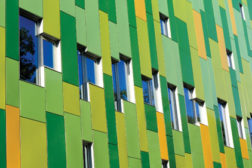Home » Solar Coatings
Articles Tagged with ''Solar Coatings''
Transparent Electrodynamic Dust Shields Usable for Solar Cells
Read More
It’s a Bird… It’s a Plane… It’s Solar Impulse!
New Coating Technology Helps Build Solar Aircraft
Read More
Potential for a New Generation of Solar-Reflective Coatings
New Coating Pigment Gives High Infrared Reflectance
Read More
Keep the info flowing with our eNewsletters!
Get the latest industry updates tailored your way.
JOIN TODAY!Copyright ©2024. All Rights Reserved BNP Media.
Design, CMS, Hosting & Web Development :: ePublishing







